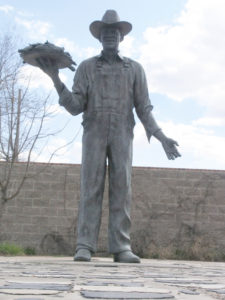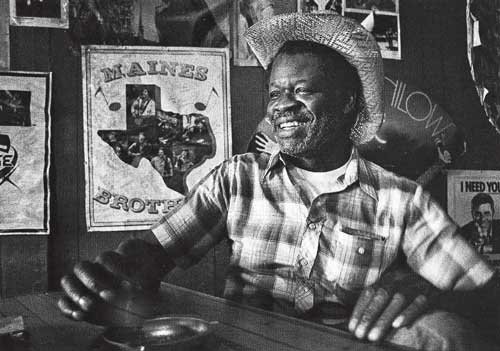 By Stacy Keith
By Stacy Keith
Behind the origin story of every great legendary place are usually legendary people with the forethought, vision, and creativity to build it. In Lubbock, Texas, one of the most legendary places I hear discussed in music circles is Stubb’s Bar-B-Q. This iconic venue, now gone for many years, hosted musicians traveling through Lubbock, Texas. It was particularly known for its Sunday Night Jams hosting such famed musicians as Stevie Rae Vaughan, Joe Ely, and Jesse “Guitar” Taylor. In addition, Stubb’s was a launching stage for many local musicians, including the original Joe Ely Band.
Christopher B. Stubblefield (known as Stubb by his family and friends), among other notable West Texas artists, is featured on Lubbock’s West Texas Walk of Fame. Through a unique partnership with the Southwest Music Archive at Texas Tech University and Civic Lubbock, a new exhibit will soon be on display at the Buddy Holly Center, featuring the stories behind the names. Stubb’s Bar- B-Q, Jesse “Guitar” Taylor, Joe Ely, Paul Milosevich, and Terry Allen are those who the first exhibit will feature.
Why was a barbeque place in Lubbock, Texas, so iconic and important to music? To find out, I talked with Curtis Peoples and Jonny Verbeten of the Southwest Music Archive and Jacqueline Bober, Director of the Buddy Holly Center.
Stubb served in Korea and was in the 96th Field Artillery, the army’s last all-black infantry unit. He was injured multiple times and was moved and assigned as a mess sergeant, where he utilized his love of cooking to treat his fellow soldiers to really good food. After being honorably discharged (he came home with two purple hearts), Stubb returned to Lubbock in 1967 and opened his first restaurant. A simple concept – barbeque and beans – Stubb’s helped transform a community and the music scene in Lubbock during a time when integration was not standard – bringing people of all colors together who loved great music and great food. This move was a large part of the magic of Stubb and his place.
Musicians would often travel through the Hub City, and word spread about the fun atmosphere and ability to play for a meal at a Lubbock barbeque joint. It wasn’t just the food that attracted people, but the owner and his kind, generous and caring personality. Willing to literally give someone the hat off his head, Stubb was a respected businessman and lover of music who set the scene.
While only 75 patrons could be accommodated, Stubb’s was often packed to the brim as musicians played on Sunday nights. The famed Sunday Night Jam sessions would last well into the wee hours of the morning. Friendships blossomed among musicians and patrons as well as with the venue owner – famous names such as Tom T. Hall paid visits to Stubb’s, and it was more than the food that attracted them; it was the man himself. Today, Stubb’s original building is gone. It is just a memory in Lubbock grounded with a beautiful statue by Terry Allen of the man holding a plate of his famous chicken, which sits on the grounds of the former restaurant. Stubb, of course, moved on to well-deserved success in larger markets and eventually sold his famous sauce recipe – yes, that’s the Stubb’s Barbeque sauce you see on grocery store shelves today. In 2019, he was inducted into the American Royal Association’s “Barbeque Hall of Fame,” an honor accepted on his behalf by two of his grandsons (Stubb sadly passed away in 1995).
Stubb is a member of the West Texas Walk of Fame, and his inspiring story and life are the catalyst for the exhibit “Sunday Night Jam.” The exhibit opens on Buddy Holly’s birthday (September 7, 2022) at the Buddy Holly Center. It runs through the end of February (Black History Month), which couldn’t be more appropriate for this Texas giant. Artifacts from the original restaurant will be on display, as well as Jesse “Guitar” Taylor’s famous “Dice” guitar, original artwork by Paul Milosevich, photographs, and anecdotes. This exhibit is a great tribute to learning about this important piece of Lubbock African American music history and the man who provided musicians a great plate of food, a place to be creative, collaborate, and, most importantly, play music.
For more information on the exhibit, visit the Buddy Holly Center website.

